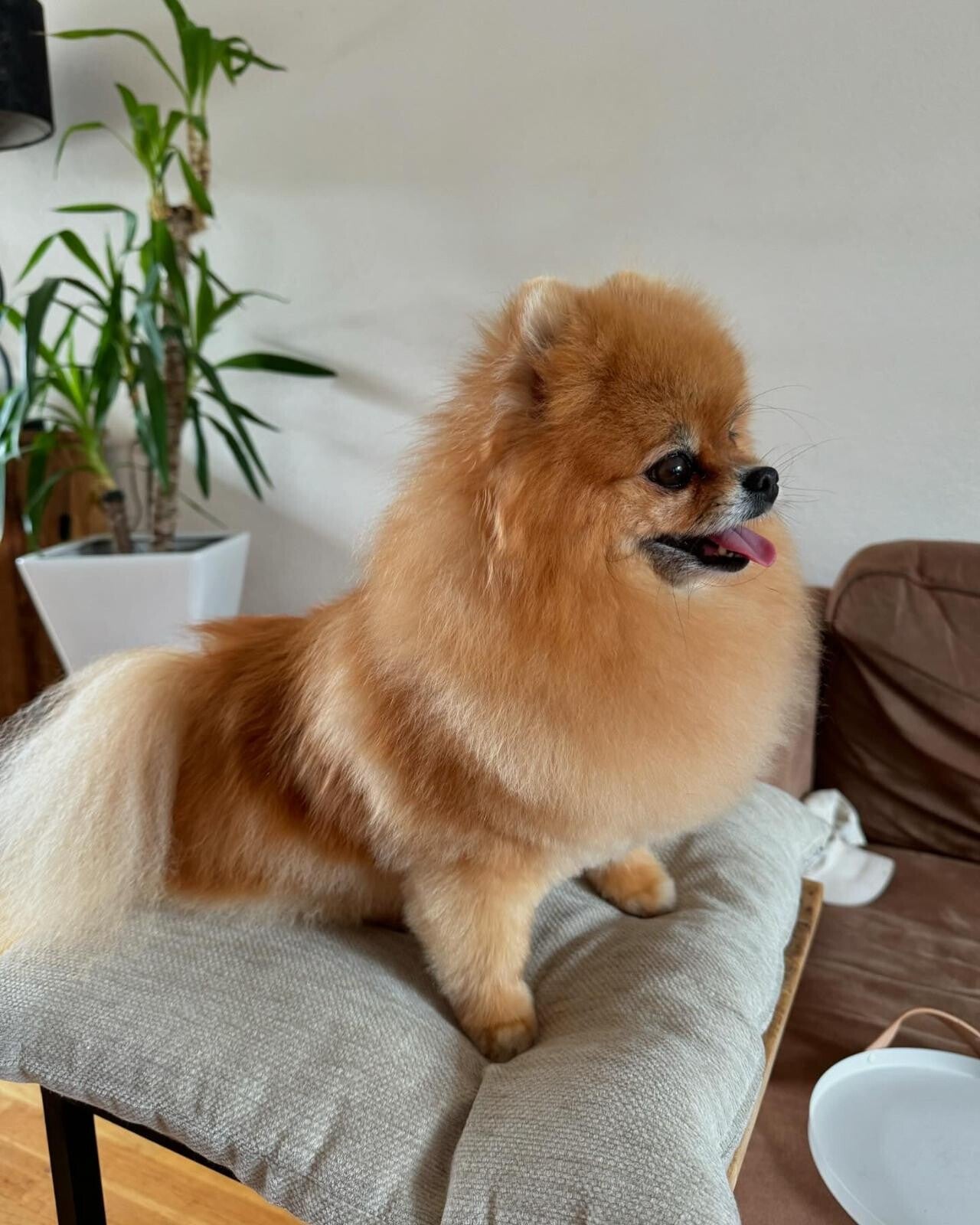
Maak kennis met Rio
RIO is de moeder van Maya, een ontzettend lieve en zorgzame hond. Ze brengt regelmatig een bezoek aan mijn vader en moeder, waar ze zorgt voor veel gezelligheid en plezier. Ondanks haar zachtaardige karakter is ze ook een uitstekende waakhond. Daarnaast gaat RIO goed om met andere huisdieren, zoals katten, wat haar nog charmanter maakt.
RIO is grondig getest: haar patellaresultaten zijn 1/1, CM/SM 0/0, en ze is volledig getest via EMBARK.
Bekijk de onderstaande link voor meer informatie over haar stamboom en gezondheidstesten.
RIO Dutch Dog Data
Hieronder vindt u de uitmuntende beoordeling en de welverdiende eerste plaats in de open klasse.

Onderstaand vind je de DNA-kleurcodes van RIO, zoals vastgesteld door EMBARK.
| COLORS | RESULT |
|---|---|
| E Locus | No dark mask or grizzle (EE) |
| K Locus | More likely to have a patterned haircoat (kyky) |
| Intensity Loci | Any light hair likely yellow or tan (Intermediate Red Pigmentation) |
| A Locus | Fawn Sable coat color pattern (ayay) |
| D Locus | Dark areas of hair and skin are not lightened (DD) |
| Cocoa | No co alleles, not expressed (NN) |
| B Locus | Black or gray hair and skin (BB) |
| Saddle Tan | Not expressed (NN) |
| S Locus | Likely solid colored, but may hav small amount of white (Ssp) |
| M Locus | No merle alleles (mm) |
| R Locus | Likely no impact on coat pattern (rr) |
| H Locus | No harlequin alleles (hh) |
| Panda White Spotiing | Not expected to display Panda pattern (NN) |
Hieronder vind je de belangrijkste en meest relevante gezondheidstesten voor RIO, zoals vastgesteld door EMBARK. De uitleg is overgenomen van de EMBARK-website.
| TEST | Result | Beschrijving |
|---|---|---|
| Hereditary Vitamin D-Resistant Rickets | Clear | Calcium absorption occurs at the level of the small intestine and is mediated by calcitriol or Vitamin D. Unlike nutritional rickets, HVDRR is caused by mutations in the Vitamin D Receptor (VDR) leading to poor calcium absorption. |
| Methemoglobinemia | Clear | Oxygen is carried in the blood by hemoglobin. Methemoglobin forms when hemoglobin iron is oxidized, and it cannot carry oxygen in the blood. Methemoglobinemia is a disease where too much methemoglobin is present and the body no longer has the oxygen supply it needs to function. This disease was first described in a mixed breed dog. |
| Oculocutaneous Albinism, OCA | Clear | Caused by a failure of melanin synthesis, oculocutaneous albinism (OCA) is characterized by lack of pigment of the eyes, skin, and hair. |
| Progressive Retinal Atrophy 5, PRA5 | Clear | Progressive retinal atrophy (PRA) describes a group of non-painful inherited disorders of the retina's photoreceptor cells that result in vision loss in dogs. PRA caused by this NECAP1 variant is a late-onset (later in life) form of PRA, affecting dogs whose eyes have completed their normal development. |
| Progressive Retinal Atrophy, rcd3 | Clear | PRA-rcd3 is a retinal disease that causes progressive, non-painful vision loss. The retina contains cells, called photoreceptors, that collect information about light and send signals to the brain. There are two types of photoreceptors: rods, for night vision and movement, and cones, for day vision and color. This type of PRA leads to early loss of rod cells, leading to night blindness before day blindness. |
| Urate Kidney & Bladder Stones | Clear | This condition causes kidney and bladder stones composed of urate. In most dogs, uric acid is converted to allantoin, an inert substance that is then excreted in the urine. Dogs with HUU have defects in the pathway that converts uric acid to allantoin. As such, uric acid builds up, crystallizes and forms urate stones in the kidney and bladder. Uric acid is an intermediate of purine metabolism. While hyperuricemia in other species (including humans) can lead to painful conditions such as gout, dogs do not develop systemic signs of hyperuricemia. |